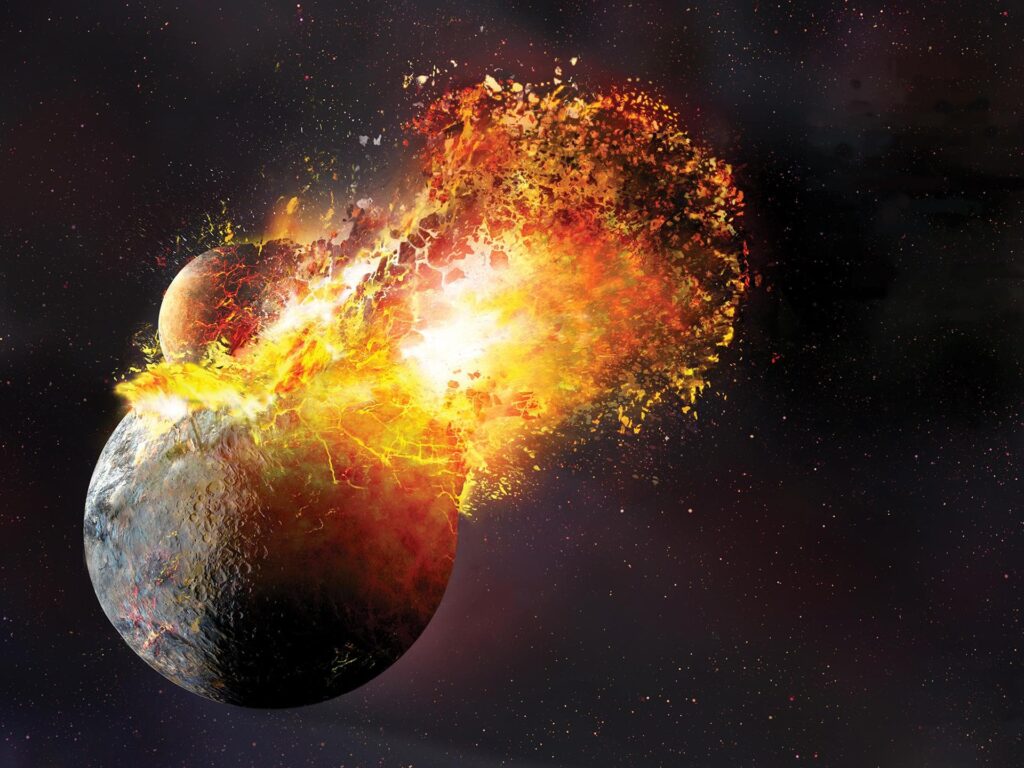A team of researchers from the Institute of Computational Cosmology at Durham University has created a new computer simulation of the birth of the Moon. It showed that the moon of our planet could form much faster than previously thought.
Giant collision theory
According to the prevailing hypothesis today, the Moon was formed 4.5 billion years ago when a protoplanet about the size of Mars (it is usually called Theia) collided with the Earth. The impact led to the fusion of the cores of the two planets, while parts of their mantles were ejected into space, after which the Moon was formed from them.

Despite the detailed elaboration and compliance with many observed features of the Earth–Moon system, there are a number of difficulties in the theory of a giant collision. They are mainly related to the ratio of some chemical elements in the lunar crust and their isotopic composition. But, according to scientists from Durham University, most of these problems are solved, provided that the Moon formed much faster than previously thought.
Rapid Moon Formation
In confirmation of their words, the scientists cite the results of their own study of the formation of the Moon. Within its framework, they conducted simulations of hundreds of different collision scenarios, varying its angle and speed, as well as the mass and rotation parameters of the Earth and Theia. In the course of the study, scientists came to the conclusion that simulations with standard resolution can miss very important aspects of such events, creating an incorrect picture of the formation of the Moon.
A detailed model of the collision of the Earth and Theia created by scientists using a supercomputer showed that the Moon could have formed almost immediately after the collision, and not gradually “assemble” from the debris in near-Earth orbit. This is important because it means that the moon of our planet was subjected to less melting, and its outer layers should be much richer in terrestrial minerals than previously assumed. In turn, this solves a number of problems related to the isotopic composition and internal structure of the Moon.
In addition, the new model showed that even when the newly formed moon approached the Earth by a short distance, it would have been able to avoid being torn apart by tidal forces. Instead of destroying it, Earth’s gravity would simply push it into a wider orbit. Previous models did not assume such a possibility.
You can also read about how an interstellar object crashed into the Moon.
Follow us on Twitter to get the most interesting space news in time
https://twitter.com/ust_magazine
